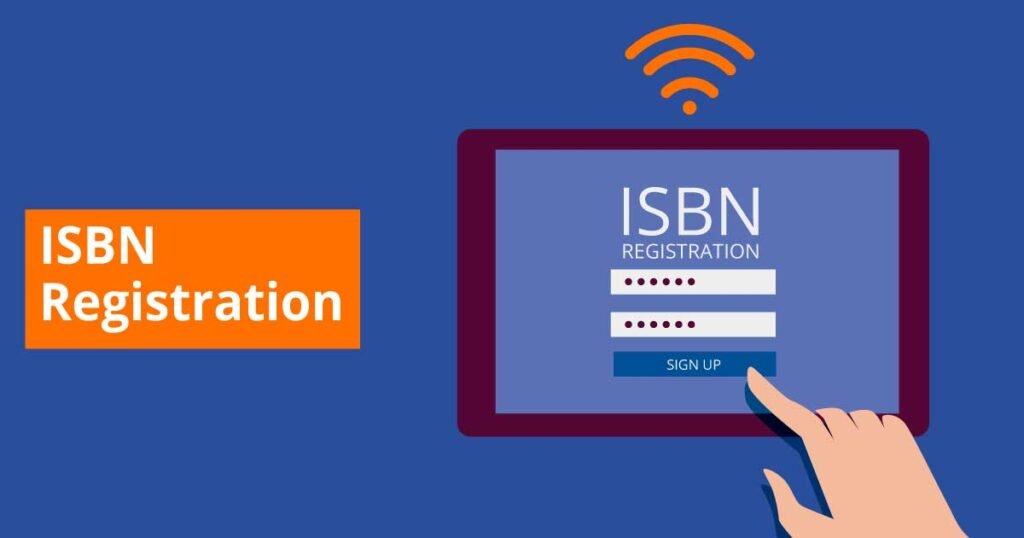Self-publishing in Australia is an exciting path for writers who want control over their creative process and the ability to reach readers directly. With a growing self-publishing market, Australian authors can now publish their work without relying on traditional publishers, making it easier to get their book into readers’ hands. This guide explains how to self-publish a book in Australia, covering everything from preparing your manuscript to marketing and distributing your final product.
1. Preparing Your Manuscript
The first step in the self-publishing process is to ensure that your manuscript is polished and ready for publication. The quality of your writing, formatting, and overall presentation plays a significant role in the success of your self-published book. To self-publish a book in Australia successfully, follow these steps to get your manuscript ready.
Editing and Proofreading
Editing is crucial for producing a professional-quality book. Begin with structural editing, where you focus on the book’s overall organization, clarity, and flow. Following this, line editing improves sentence structure and word choice, enhancing readability. Lastly, proofreading addresses minor errors such as typos, punctuation, and formatting issues. While you can self-edit, many Australian authors find it beneficial to hire a professional editor to bring a fresh perspective.
Formatting the Book
In self-publishing, book formatting makes a significant difference in readability and presentation. Formatting refers to the layout and design of your book’s interior pages. For printed books, this includes the size, font type, margins, headers, and footers. For eBooks, proper formatting ensures compatibility across devices like tablets, smartphones, and e-readers. Software programs like Microsoft Word, Scrivener, and InDesign are commonly used for book formatting. Proper formatting helps make your self-published book visually appealing and easy to read, which is essential for retaining readers’ attention.
Cover Design
The book cover is the first thing potential readers see, so creating an attractive cover is essential for grabbing attention. Consider hiring a professional designer if budget permits, as a high-quality cover makes a lasting impression. Alternatively, you can use design tools to create your own cover, focusing on elements like the title, subtitle, color scheme, and any images or graphics. An effective cover design will reflect your book’s genre and theme, making it more appealing to your target audience.
2. Choosing a Self-Publishing Path in Australia
Australia offers multiple options for self-publishing, allowing you to choose a path that best fits your goals and budget. While you can self-publish a book in Australia for free, many authors invest in professional services to enhance their book’s quality. Consider these options when deciding how to publish and distribute your book.
Print-on-Demand Services
Print-on-demand (POD) services allow you to publish physical copies of your book without large upfront costs. With POD, books are printed only when orders are placed, saving you from the need to stock inventory. This is especially beneficial for authors in Australia, as POD services can handle printing, packaging, and shipping, allowing readers to order your book from anywhere.
E-Book Publishing
Publishing an eBook is an excellent option for authors who want to reach a broad digital audience. With eBooks, readers can download your book on devices like tablets, smartphones, and computers, providing a convenient reading option. Self-publishing eBooks in Australia is relatively affordable, as it eliminates printing costs. However, the eBook formatting must be precise to ensure compatibility across devices.
Hybrid Publishing
Hybrid publishing combines elements of traditional and self-publishing. In this model, you share costs with a publishing company that provides services like editing, design, and distribution. Although hybrid publishing is not the same as self-publishing, it offers support while allowing you to retain some creative control and higher royalties.
3. Obtaining an ISBN and Registering Your Book
An ISBN (International Standard Book Number) is essential for any self-published book intended for sale. In Australia, ISBNs are available through Thorpe-Bowker, the official ISBN agency. The ISBN is a unique identifier that enables libraries, bookstores, and distributors to track and catalog your book. If you plan to self-publish multiple books, consider purchasing a block of ISBNs to save on costs.
How to Register for an ISBN in Australia

- Visit the Thorpe-Bowker website (myidentifiers.com.au) to create an account.
- Choose the number of ISBNs you need based on your publishing plans.
- Complete the purchase and register your book title with the assigned ISBN.
Registering an ISBN ensures your book can be cataloged and recognized by bookstores and libraries, expanding its reach to potential readers. If you are publishing both print and digital versions, each format requires a separate ISBN.
4. Publishing and Distribution in Australia
Once your manuscript is formatted, and you have your ISBN, you’re ready to publish and distribute your book. There are multiple distribution options, depending on whether you are publishing in print, digital, or both.
Uploading Your Book Files
To publish, you need to upload your finalized manuscript and cover files to your chosen publishing platform. Most self-publishing platforms require specific file formats, such as PDF for print books and ePub for eBooks. Make sure you have met all formatting requirements for a smooth upload process.
Setting Pricing and Royalties
Setting an appropriate price for your book is key to attracting readers and ensuring profitability. Research the pricing of similar books in Australia to understand the market. Consider the costs of printing, distribution, and platform fees when determining your price. For authors using print-on-demand services, remember that the price must cover production costs while remaining attractive to buyers.
Selecting Distribution Channels
Distribution choices impact your book’s availability to readers. Many self-published authors in Australia choose broad distribution, allowing their book to be available in major Australian bookstores, libraries, and global markets. This is especially beneficial for reaching a wider audience, as it allows your book to be ordered online by readers internationally. If you aim to keep distribution local, select options that prioritize Australian stores and online retailers.
5. Marketing Your Self-Published Book in Australia
Effective marketing strategies can make a substantial difference in your book’s success. For self-publishing in Australia, a combination of digital and local marketing techniques works well.
Building an Author Platform
An author platform includes your online presence, such as a website, social media profiles, and an email list. Creating an author website can serve as a hub for information about your book, upcoming projects, and ways for readers to connect with you. Social media is also powerful for self-published authors in Australia, as platforms like Instagram, Facebook, and Twitter allow you to share teasers, updates, and engage with readers.
Local Promotion
Promoting locally is a valuable strategy for self-published authors. Reach out to local Australian bookstores to see if they would be interested in stocking your book. Independent bookstores often support local authors and might be willing to feature your book in-store or online. Libraries are another excellent resource, as many Australian libraries are open to showcasing self-published books. In addition, consider hosting a book launch or signing event at a local venue to increase visibility and create buzz.
Encouraging Reviews
Positive reviews build credibility and make your book more appealing to new readers. Encourage friends, family, and early readers to leave reviews online or on reader websites. Positive reviews are especially impactful on digital platforms, as they improve your book’s visibility and make it more likely to appear in search results.
Reaching Out to Media and Bloggers
Media coverage and blog reviews help increase awareness of your book. Contact Australian book bloggers, literary magazines, and websites that cater to your genre. Many bloggers enjoy reviewing books and might be interested in featuring yours. You can also pitch your story to local newspapers, especially if your book has a unique or regional focus.
6. Managing Self-Publishing Costs in Australia
The cost of self-publishing in Australia varies based on your publishing choices. Basic expenses include editing, cover design, ISBN registration, and distribution fees. For authors who want to keep costs low, consider free resources for editing and design, though these may not provide the same quality as professional services. Investing in quality services can improve your book’s success by making it more polished and marketable.
Cost Breakdown for Self-Publishing in Australia
- Editing: $200 – $2,000, depending on the depth of editing and editor’s experience
- Cover Design: $100 – $500, with custom designs at the higher end
- ISBN Registration: Approximately $44 for a single ISBN
- Formatting: $50 – $300, depending on complexity and service
- Marketing Expenses: Varies; could include social media ads, event costs, or promotional materials
7. Benefits of Self-Publishing in Australia
Self-publishing allows you to retain creative control and earn higher royalties. Unlike traditional publishing, where rights and a portion of royalties are often surrendered, self-publishing gives you full ownership. You can set the price, choose the marketing strategies, and have final say over the book’s design and distribution. Additionally, self-publishing lets you bypass the lengthy traditional publishing process, allowing you to get your book into readers’ hands more quickly.
8. Challenges of Self-Publishing in Australia
While quite fulfilling in itself, self-publishing is by no means easy. Authors have to perform tasks which otherwise a traditional publisher would carry out, including editing, designing the cover, and managing marketing. Managing finances, including front-end costs and ongoing expenses, is a challenge. However, despite these challenges, the self-publishing industry in Australia has developed all sorts of resources and services that make it easier to enjoy success with independent authors.
Conclusion
Self-publishing a book in Australia is one fulfilling journey since it hands you everything on manuscript preparation thus giving you total mastery of all stages involved. Once you have the right self-publishing platform, ISBN allocation, and campaigning for your book, it becomes effective in reaching its audience. Never before has self-publishing been easier for any Australian author to do than now with accessible services, resources, and built-up distribution channels. Good luck to you as you embark on your self-publishing adventure in Australia!








